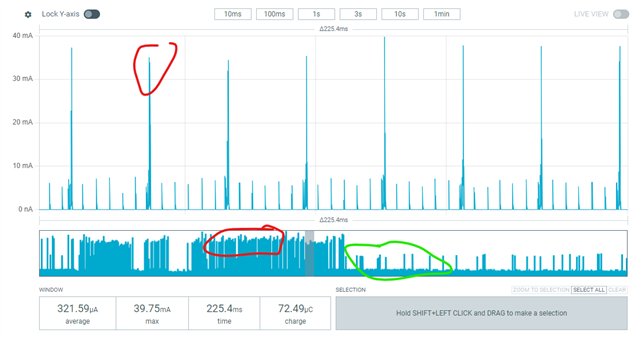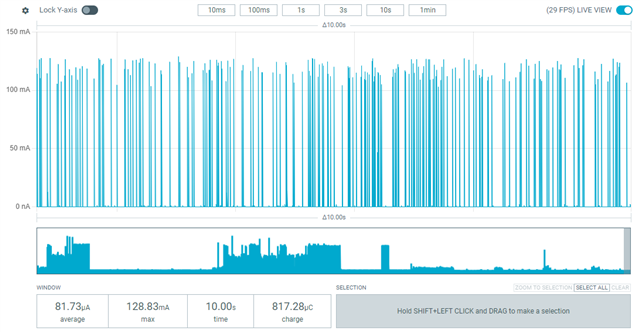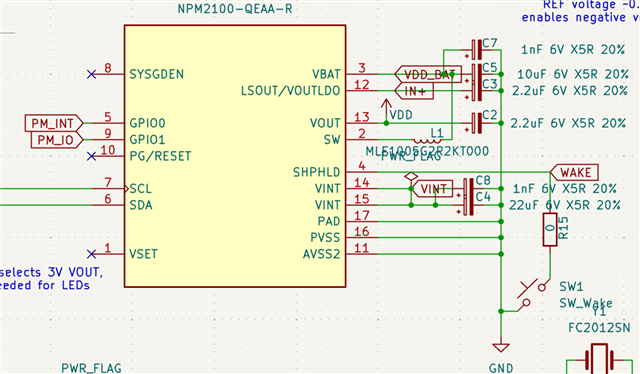I've got some timing-issues with the nPM2100. As I could not locate the relevant information in the datasheet, I'm requesting this here.
My PCB has an nPM2100 with a mechanical vibration sensor connected from SHPHLD to GND. GPIO0 is connected to a GPIO of a NRF54L15, which is powered by VOUT. I've configured GPIO as a OUTPUT and enabled SHPHLDFALL and SHPHLDRISE interrupts.
0x0A: 0b0000110 (RISE/FALL)
0x80: 0b0001010 (OUTPUT/PULLDOWN)
0x83: 0b0000010 (USAGE0 INT_HIGH)
First mention. I really do not understand, why while in ship mode, the tPWROFF (wakeup time on SHPHLD low) is 2000ms (nRF1300 isn't). Couldn't this be programmable in series version? Right now, I need to use hibernate mode with debounce filter off, which gives expected results having higher energy consumption.
Second aspect is, that triggering the interrupt after SHPHLD edge takes 100ms. And further more, what's the time SHPHLD must be kept in switched level to be detected? The currently applied sensor only produces low-pulses of <20µs, which mostly does not get recognized by the nPM2100 (even with 0R series resistor). Can I apply a capacitor? What about leakage currents?
Any guide would be helpful. Thanks.







